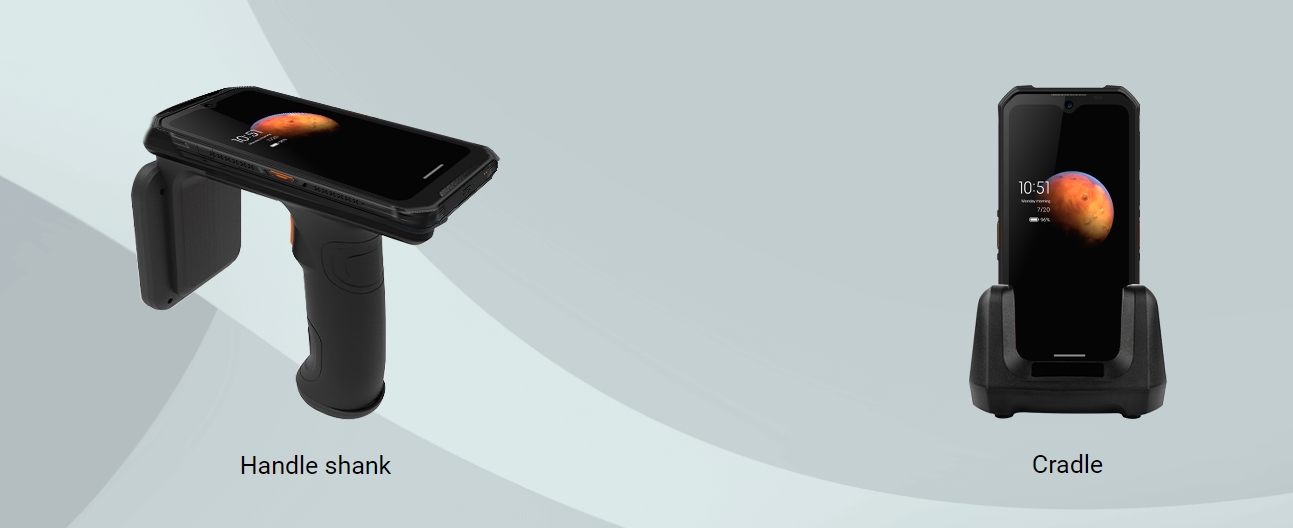In the fast-paced world of logistics, efficiency and accuracy are paramount. Every second counts when it comes to managing inventory, processing shipments, and ensuring timely deliveries. This is where logistics handheld scanners come into play. These powerful devices have revolutionized the logistics industry by providing real-time visibility, streamlining operations, and improving overall productivity. In this blog post, we will explore the various benefits and functionalities of logistics handheld scanners, and how they have become an indispensable tool for modern logistics management.

Real-Time Visibility and Inventory Management
Real-time inventory visibility stands as a prominent advantage offered by logistics handheld scanners. From the moment goods arrive at a warehouse or distribution center to their final delivery, handheld scanners enable logistics professionals to track and monitor the movement of products accurately. By scanning barcodes, RFID tags, or QR codes, logistics teams can instantly update inventory systems, ensuring accurate and up-to-date information.
The real-time visibility provided by logistics handheld scanners is essential for efficient inventory management. These devices facilitate precise stock counting, inventory audits, and cycle counts with remarkable ease. By eliminating the need for manual processes, they effectively minimize human errors and significantly enhance overall inventory accuracy. With handheld scanners, logistics teams can quickly identify discrepancies, prevent stockouts or overstocking, and optimize order fulfillment. The ability to access real-time inventory information empowers logistics professionals to make informed decisions, such as prioritizing shipments, reordering items, or adjusting storage space allocation.
.png)
Streamlined Order Picking and Packing
Efficient order picking and packing processes are essential for meeting customer expectations and ensuring timely deliveries. Logistics handheld scanners greatly enhance these operations by providing seamless scanning capabilities and real-time data updates. Warehouse workers can use handheld scanners to scan barcodes or pick lists, ensuring accurate item selection and minimizing errors.
The utilization of handheld scanners empowers workers to swiftly locate and verify items, minimizing the time allocated to searching for products within the warehouse. By scanning the items, the inventory system receives real-time updates, guaranteeing precise stock levels and preventing errors in order fulfillment. This heightened level of accuracy not only enhances customer satisfaction but also reduces the expenses associated with returns and re-shipping.
Furthermore, logistics handheld scanners can be integrated with voice-picking systems or wearable devices, further streamlining the order picking process. Workers receive instructions through headsets or wearable displays, and they confirm their actions by scanning barcodes with handheld scanners. This hands-free approach improves productivity, reduces errors, and enhances worker safety by allowing them to keep their focus on the task at hand.
.png)
Efficient Shipping and Receiving
Shipping and receiving operations are critical components of logistics management. Handheld scanners play a vital role in ensuring the accuracy and efficiency of these processes. When receiving goods, logistics professionals can use handheld scanners to scan barcodes or RFID tags on incoming shipments, instantly updating the inventory system and confirming receipt. This eliminates the need for manual data entry and minimizes errors.
Similarly, when preparing shipments for delivery, handheld scanners enable quick and accurate verification of items. As each item is scanned and packed, the system is updated in real-time, ensuring accurate tracking and documentation. Handheld scanners can also generate shipping labels and capture customer signatures, providing a seamless end-to-end process.
Moreover, logistics handheld scanners can integrate with transportation management systems, allowing for seamless communication between warehouse operations and carriers. Shipping information, such as package weight, dimensions, and shipping labels, can be captured by handheld scanners and transmitted directly to the carrier's system, reducing manual data entry and improving overall efficiency.
.png)
Tracking and Traceability
In an era where traceability and transparency are of utmost importance, logistics handheld scanners provide the tools to effectively track and monitor shipments. By scanning barcodes or RFID tags at each stage of the supply chain, logistics professionals can capture vital information, such as the origin, destination, and transit times.
This tracking capability not only ensures the visibility of shipments but also enhances quality control and compliance. Handheld scanners can capture data related to product expiry dates, batch numbers, or serial numbers, enabling effective recall management and traceability in case of any issues or recalls.
Furthermore, logistics handheld scanners can be integrated with cloud-based platforms or enterprise resource planning (ERP) systems, providing a centralized and comprehensive view of the supply chain. By sharing real-time tracking data with customers, logistics companies can offer visibility into the status of their shipments, fostering improved communication and transparency.
Analytics and Reporting
The data collected by logistics handheld scanners can be leveraged to gain valuable insights and drive informed decision-making. By analyzing the data, logistics professionals can identify trends, optimize routes, improve warehouse layout, and make data-driven strategic choices. Handheld scanners can also capture data related to worker productivity, helping identify areas for improvement and training opportunities.
Additionally, logistics handheld scanners can generate reports on key performance indicators (KPIs), such as order accuracy, delivery times, or inventory turnover. These reports provide valuable metrics for evaluating operational efficiency and identifying areasfor improvement. With the ability to generate custom reports and analytics, logistics managers can monitor performance, track progress, and make data-driven decisions to optimize their supply chain operations.

Logistics handheld scanners have transformed the way logistics operations are managed. With their ability to provide real-time inventory visibility, streamline order picking and packing, facilitate efficient shipping and receiving, enable tracking and traceability, and offer data analytics capabilities, these devices have become essential for modern logistics management. By adopting logistics handheld scanners, companies can optimize their processes, improve accuracy, enhance productivity, and gain a competitive advantage in the industry. The ability to access accurate and up-to-date information on inventory levels, track shipments, and analyze data empowers logistics professionals to make informed decisions, optimize operations, and meet customer expectations. In a rapidly evolving logistics landscape, embracing the power of handheld scanners is crucial for staying ahead and delivering exceptional service in a fast-paced and demanding environment.


 French
French German
German Arabic
Arabic Italian
Italian Spanish
Spanish Japanese
Japanese Persian
Persian Korean
Korean Chinese (Simplified)
Chinese (Simplified)









